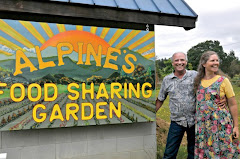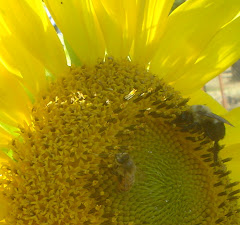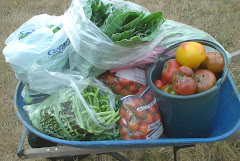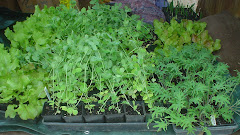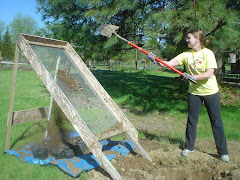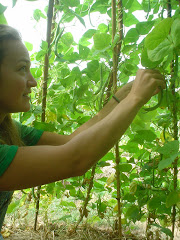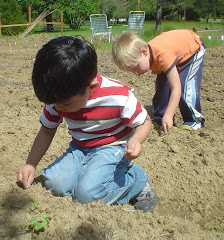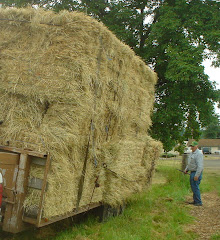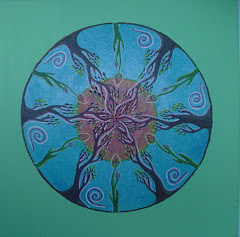 |
| This is a great 'carrot-year' for us! Just in time to help loosen Bella (L) and Adri's (R) baby-teeth. |
Hello Folks! The gardens are finally really thriving this year! We've put the 'herbicide contamination debacle' behind us and are thrilled to already be eating cucumbers, potatoes, summer squash, and tomatoes daily from the gardens. That's early for us! Both our local Food Pantries have begun receiving weekly deliveries of fresh, organic produce that, along with cucumbers and squash include cabbage, beets, carrots, kale, elephant garlic and lettuce.
We feel relatively confident that we have identified the source of the herbicide contamination that devastated so many of our seedlings this year. We had made our own potting-soil from a combination of composted horse-manure combined with last-year's compost (made primarily from leaves, grass-clippings, wheat-straw and vegetable scraps) and we weren't sure which ingredient was the cause of our problems. LINK to original article
 |
| We make our compost primarily from leaves, lawn clippings, wheat-straw and food-scraps. |
 |
| Herbicide contamination of tomato. |
Our last piece of evidence that supports our theory is that our friend used some of that less-composted manure on his tomato patch and all of his tomatoes are showing strong signs of contamination (and he didn't use any of our compost, or the wheat straw we thought might be the source).
It's becoming harder and harder to find clean sources of material to use as mulch, or to build our compost piles as more and more chemicals are being used to grow food, and showing up in the environment from other sources. We just each have to do the best we can!
Will we continue to use the horse manure from our friend? We've really meditated on this. It is our intention to demonstrate a "veganic" style of agriculture that uses no livestock manures, or commercial, concentrated fertilizers. It is important to us to use local materials - like leaves and grass-clippings to create soil-fertility. We don't eat meat of any kind and feel it's hypocritical to benefit from the by-products of an industry that is not sustainable and that we don't support philosophically. Recently we did turn down an offer for a load of goat-manure to be delivered to the gardens, for these reasons. We only used a 2-pound box of commercial fertilizer to get all our seedlings started this year, which is incredible when you realize how many hundreds of seedlings we started!
 |
| A pile of our finished compost - super-food for the gardens! |
Note: If you are using horse manure in your own gardens, be sure it has composted for a minimum of two years but the longer the better. Also, if the pile sits out in the rain and fresh manure is added on the top, it's possible that the rain can leach the chemicals down into the older material at the bottom. If in doubt, do not add it to your garden, or use it to start seedlings until you test it. One website we visited recommended testing the manure/soil by planting peas or beans in it which are highly susceptible to contamination and will show signs of leaf-curling once the second set of leaves begin to form.
 |
| First ripe tomatoes - July 7th! |
